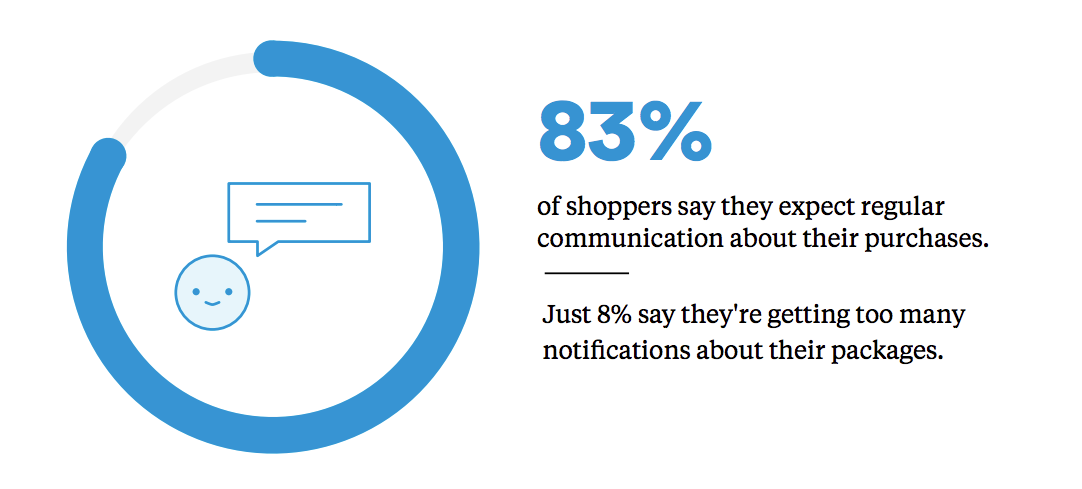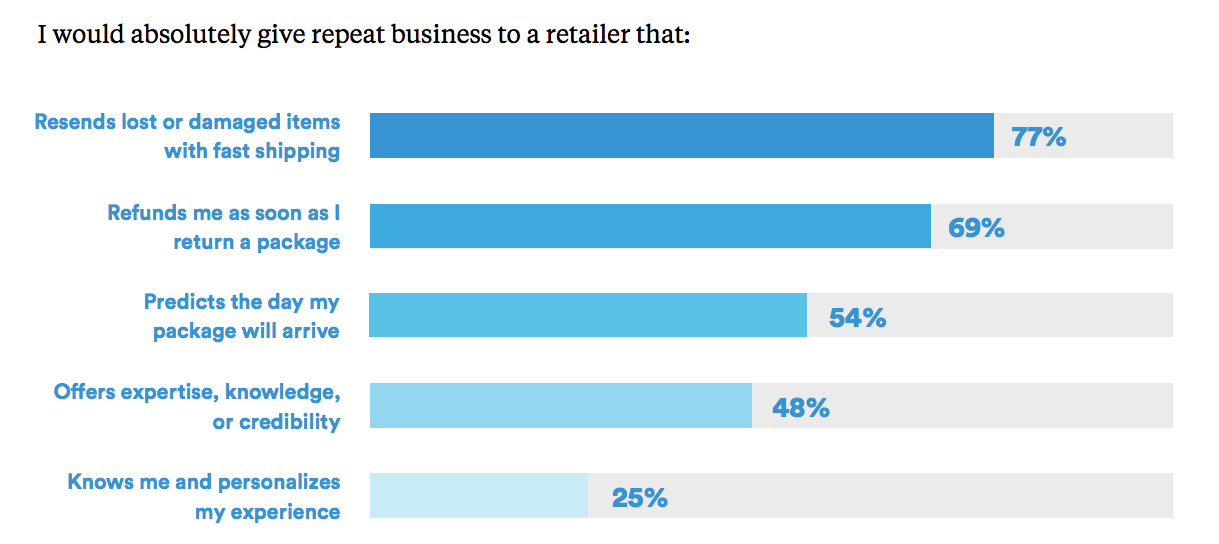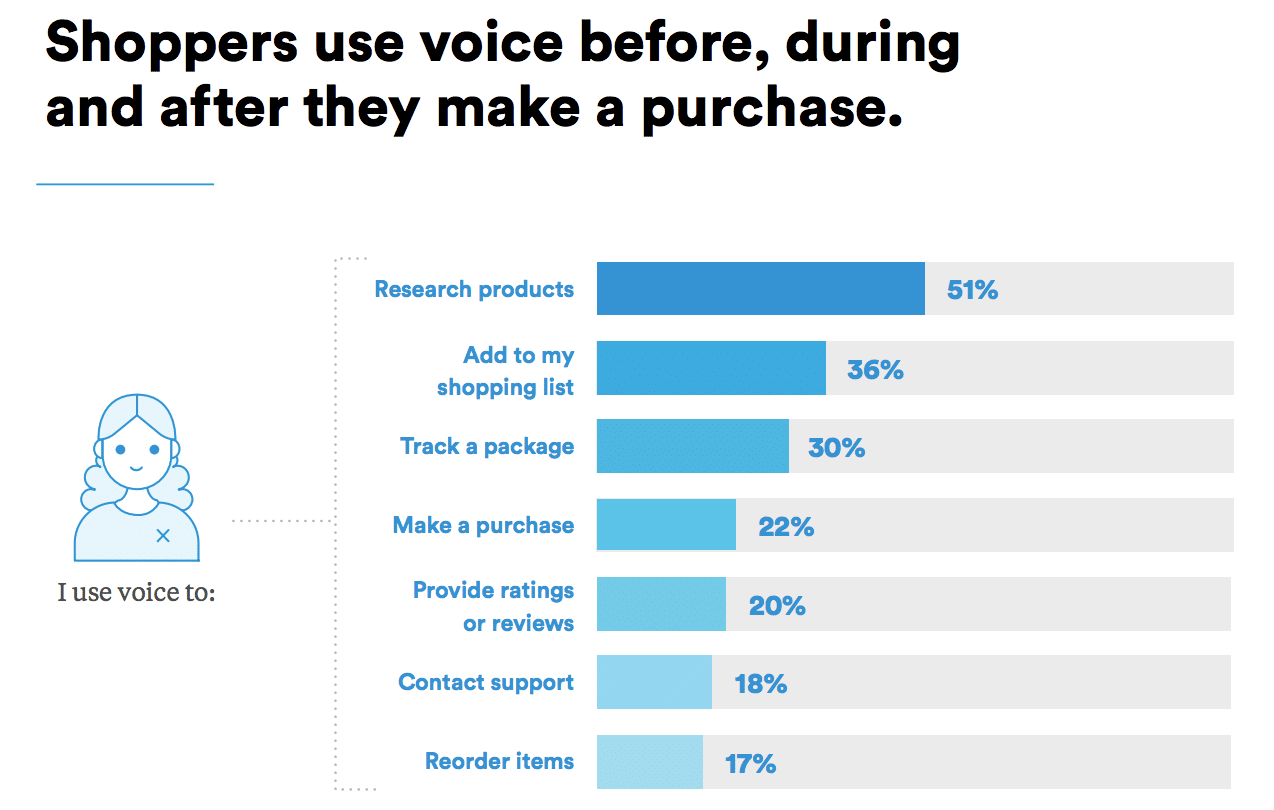In the age of digital commerce and infinite choice, shoppers expect more high-touch retail experiences, according to new research from post-purchase experience firm Narvar evaluating the ways customers prefer to communicate with their favorite brands throughout the shopping journey the leader—and how this communication breeds brand loyalty.
The boundary between online and offline is blurring as consumers integrate shopping experiences into their everyday lives. Sixteen percent of American adults (39 million) now own a smart speaker like a Google Home or Amazon Echo. Meanwhile, the retail industry is expected to invest $422 million in augmented reality (AR) and virtual reality (VR) over the next four years.
The new study finds that 41 percent of consumers currently shop or plan to shop using the voice assistant on their phone, 31 percent via voice-controlled device, and 21 percent via AR or VR technology on a smartphone. Chatbot use, meanwhile, is nascent but growing—29 percent of consumers use or plan to use chatbots to shop online.
As people get accustomed to shopping using these technologies, they are using these channels for more than researching products. The study, Connecting with Shoppers in the Age of Choice, found that 30 percent of shoppers use voice to track their packages—nearly as many as the 36 percent who use it to add items to their shopping list.
As shopping behaviors evolve, so are consumers’ expectations for proactive updates from retailers. Eighty-three percent of shoppers say they expect regular communication about their purchases, while just eight percent say they get too many notifications.
“To deliver customer care at its highest level, brands will need to anticipate customers’ wants and needs, using technologies like voice and chatbots to communicate with shoppers at every point of their journey,” said Amit Sharma, founder and CEO of Narvar, in a news release. “The retailers that succeed in building loyalty with shoppers will be those that connect with people personally and communicate proactively.”
Key findings include:
Consumers are loyal to retailers that invest in customer care
Shoppers will return to retailers who go above and beyond expectations to make them feel cared for.
- 54 percent of shoppers would give repeat business to a retailer that accurately predicts the date their package will arrive.
- 77 percent would give repeat business to a retailer that resends lost or damaged items with expedited shipping.
Retailers stand to gain—or lose—customers based on the returns process
Consumers have little tolerance for hassles related to returns; they expect ease, transparency and flexibility.
- 76 percent of shoppers would give repeat business to a retailer that makes returns and exchanges easy.
- 67 percent opt to return online purchases through the mail, but 25 percent won’t buy something if they don’t have the option of returning to a physical store.
Voice shopping is poised to go mainstream
As voice technologies become present in people’s living rooms, cars and phones, consumers are shopping more via voice.
- Device ownership has increased 42 percent in the last six months.
- Shopping via device has increased 41 percent in the last six months.
Voice is present through the entire shopping experience
Voice shopping includes much more than product discovery and transactions; people are using voice throughout their shopping journeys. Because voice device owners are more likely than other shoppers to select automatic replenishment services, retailers have an opportunity to present them with more experimental predictive experiences.
- 51 percent of shoppers use voice to research products, 36 percent use it to add items to their shopping list, and 30 percent use voice to track a package.
- 52 percent of voice device owners opt into subscription services and automatic reordering, compared to 30 percent of all shoppers surveyed.
Shoppers embrace bots, and forgive them for not being perfect
Shoppers are becoming more comfortable using bots to resolve simple customer care issues, but expect human support for help with complex questions, high-value and considered purchases, or nuanced issues.
- 65 percent of shoppers say they like using chatbots because the bots are available at any time.
- 14 percent say they don’t like chatbots at all, compared to 25 percent just six months ago.
Download the full report here.
The report analyzes responses from 1,543 U.S. online shoppers.










